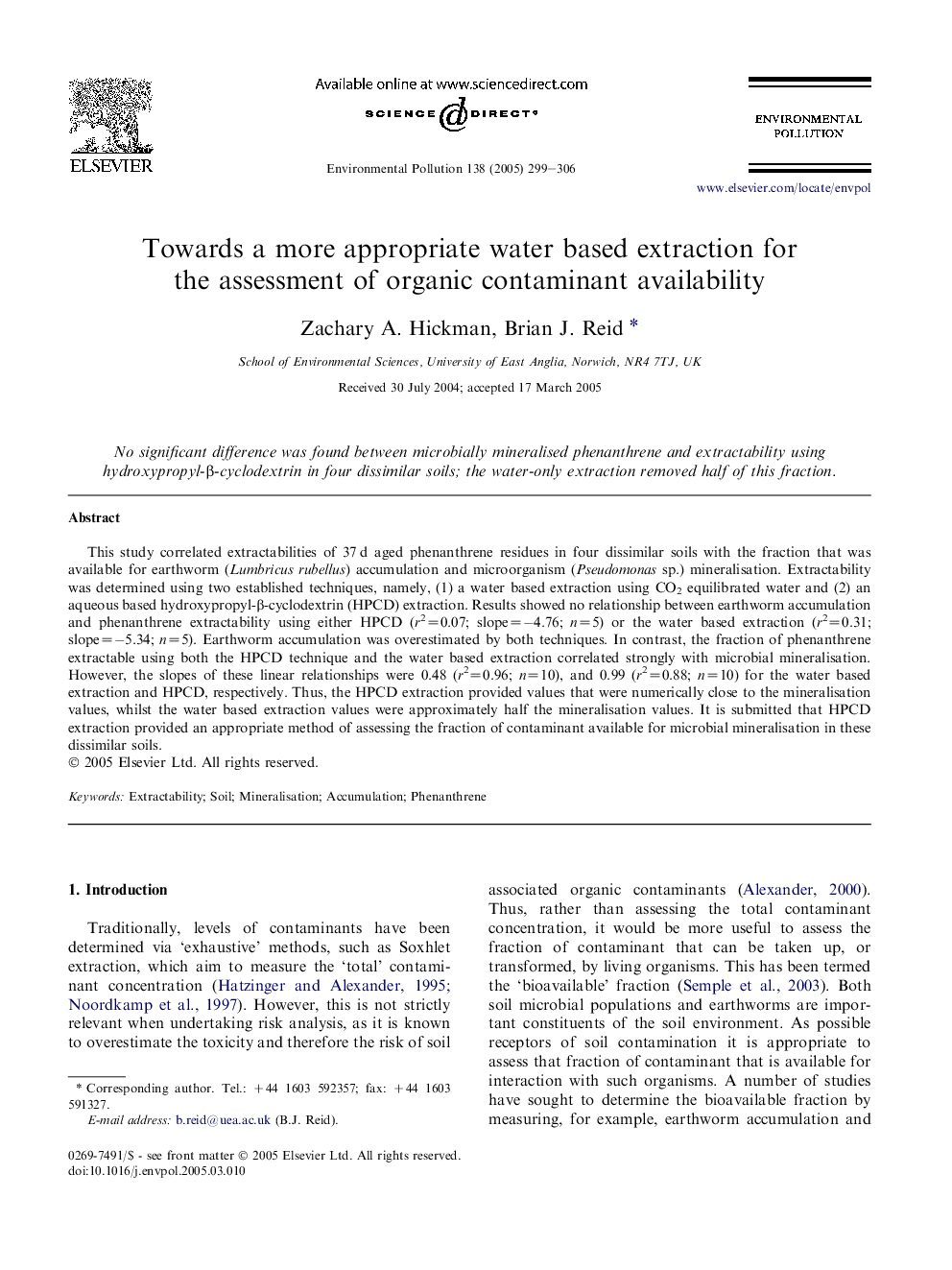| Article ID | Journal | Published Year | Pages | File Type |
|---|---|---|---|---|
| 9456152 | Environmental Pollution | 2005 | 8 Pages |
Abstract
This study correlated extractabilities of 37 d aged phenanthrene residues in four dissimilar soils with the fraction that was available for earthworm (Lumbricus rubellus) accumulation and microorganism (Pseudomonas sp.) mineralisation. Extractability was determined using two established techniques, namely, (1) a water based extraction using CO2 equilibrated water and (2) an aqueous based hydroxypropyl-β-cyclodextrin (HPCD) extraction. Results showed no relationship between earthworm accumulation and phenanthrene extractability using either HPCD (r2=0.07; slope=â4.76; n=5) or the water based extraction (r2=0.31; slope=â5.34; n=5). Earthworm accumulation was overestimated by both techniques. In contrast, the fraction of phenanthrene extractable using both the HPCD technique and the water based extraction correlated strongly with microbial mineralisation. However, the slopes of these linear relationships were 0.48 (r2=0.96; n=10), and 0.99 (r2=0.88; n=10) for the water based extraction and HPCD, respectively. Thus, the HPCD extraction provided values that were numerically close to the mineralisation values, whilst the water based extraction values were approximately half the mineralisation values. It is submitted that HPCD extraction provided an appropriate method of assessing the fraction of contaminant available for microbial mineralisation in these dissimilar soils.
Related Topics
Life Sciences
Environmental Science
Environmental Chemistry
Authors
Zachary A. Hickman, Brian J. Reid,
